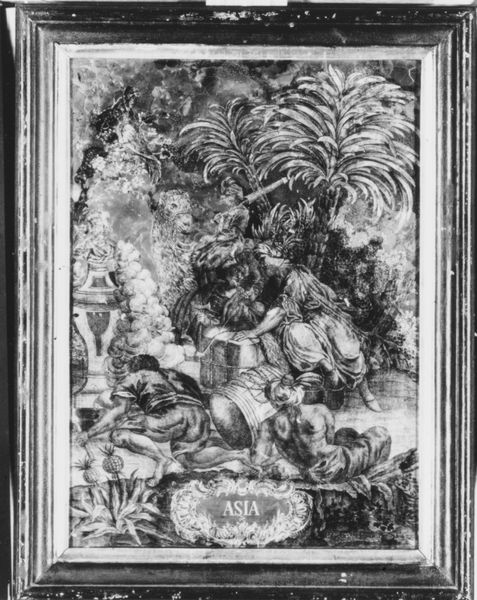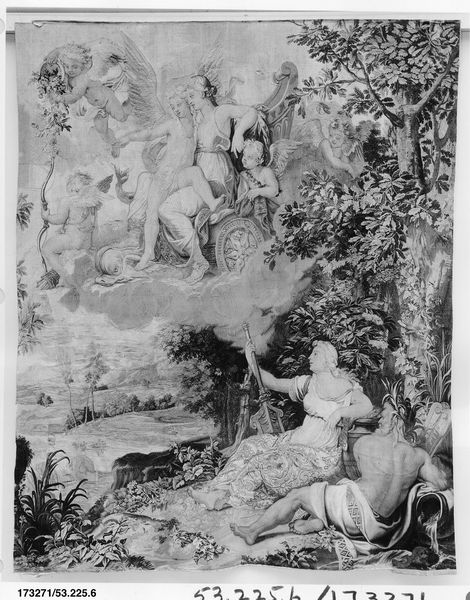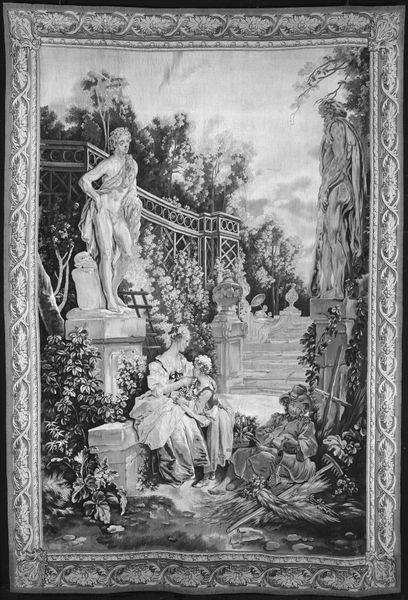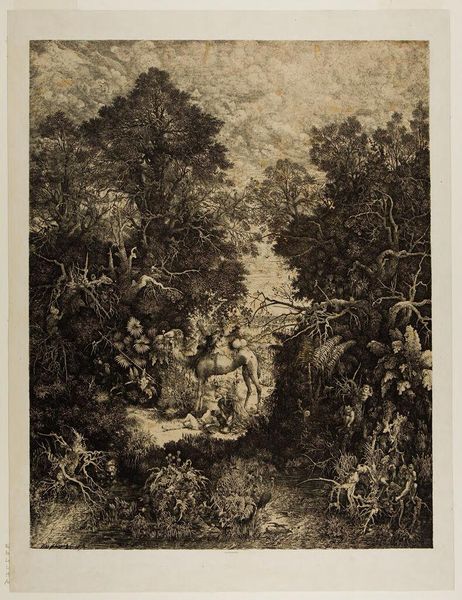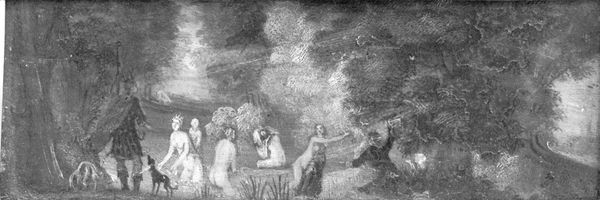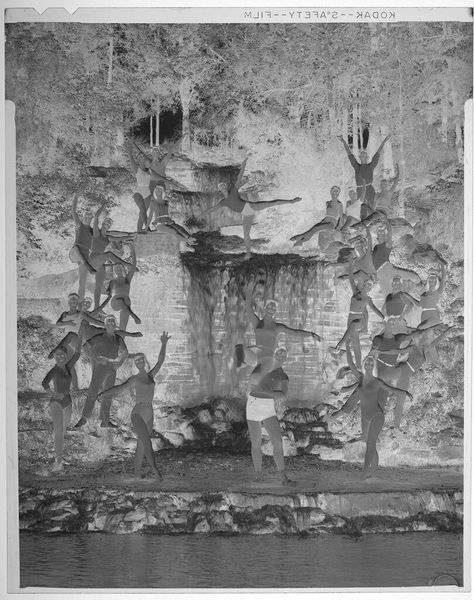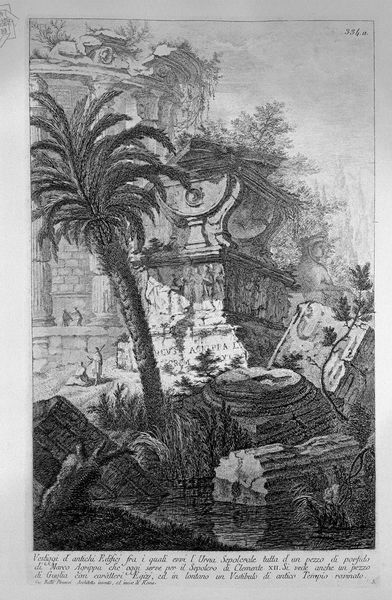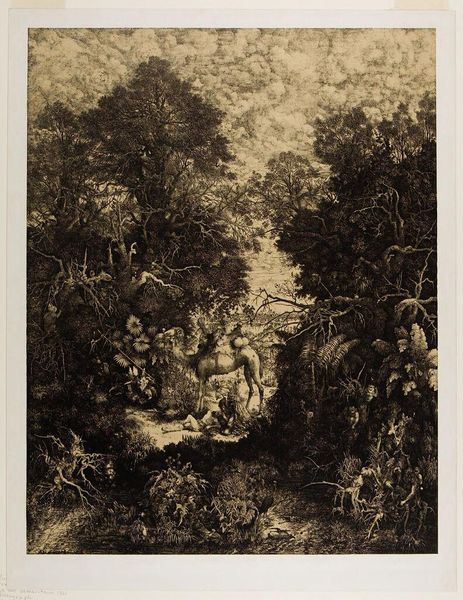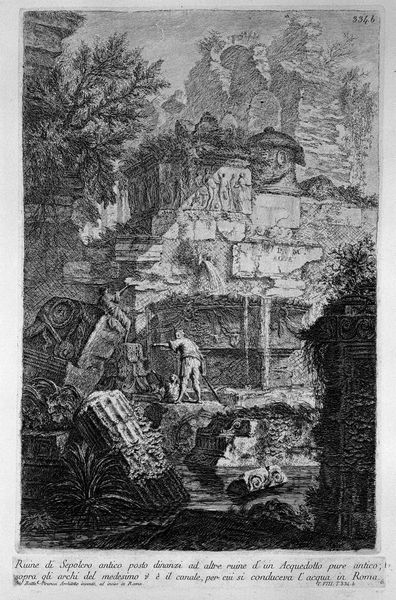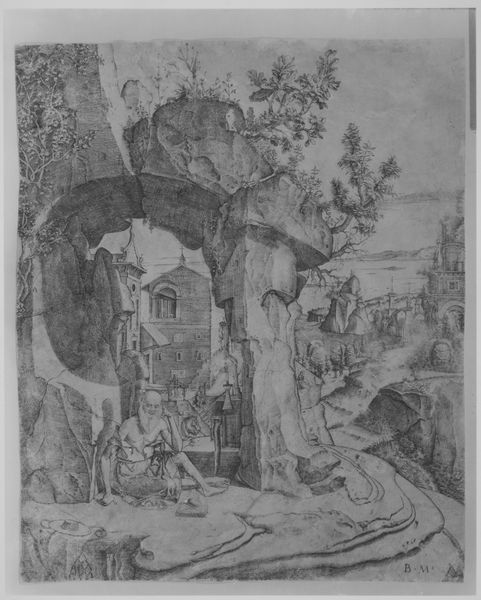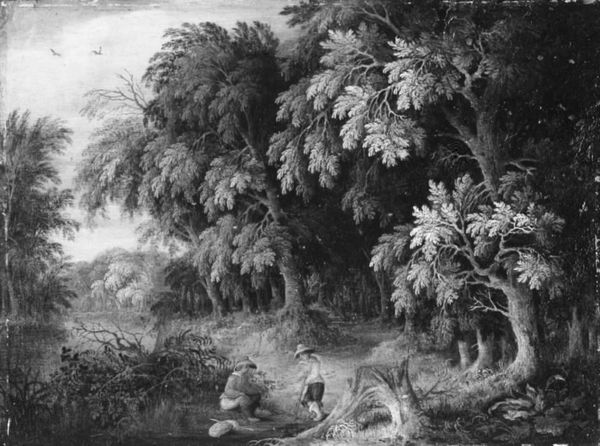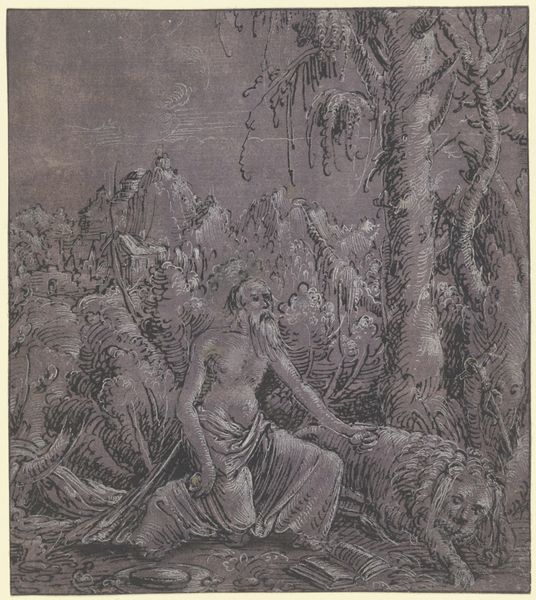
Vertumnus and Pomona from a set of Scenes from Operas 1758 - 1776
0:00
0:00
Dimensions: H. 124 1/2 x W. 81 1/2 in. (316.2 x 207 cm)
Copyright: Public Domain
Curator: This striking piece, dating from 1758 to 1776, is titled "Vertumnus and Pomona from a set of Scenes from Operas" by François Boucher. It's currently held here at the Metropolitan Museum. My first thought is: tapestry! Editor: Immediately, there's this ethereal quality, despite the density of figures and objects. It has that rococo sense of movement, a flow and dynamism made palpable through what appears to be layered textures. Curator: Indeed. This textile, based on an operatic scene, embodies Boucher’s Rococo style, blending allegory and genre painting. Notice how he uses the classical myth of Vertumnus and Pomona to explore themes of transformation and love. An aged woman offers fruit, alluding to Vertumnus's disguise. Editor: Yes, but note how the lines aren’t exactly clean. It looks intentional, adding an expressive element beyond the purely representational. And look how he handles the light—it almost seems to glow from within. How does the myth then enhance what might seem simply a decorative aesthetic? Curator: Vertumnus disguising himself represents not just physical change but psychological and emotional adaptation needed for intimacy. The opera tie-in amplifies this further. Boucher’s theatrical scenes often depicted transformative encounters that resonated with cultural anxieties and social mores of the time. The disguise theme echoes deep within societal roles. Editor: Interesting point. While recognizing its iconographic density and societal nuances, let’s circle back to form. I observe the tapestry using soft hues, but they remain tonally vibrant. Consider also the placement of the figures. A statue in the distance contrasts with cherubic figures at the top of the visual field; it’s a staged tableau before a distant prospect, if that’s how you’d consider that vista. Curator: Exactly. Boucher uses the formal garden setting – very characteristic of the period - to highlight a refined, almost idealized transformation. The gods among humans in idyllic landscape settings. In looking closely, notice how easily one can identify the tapestry as art as opposed to nature? How, perhaps, does its role as decorative-art shift one's viewing expectations? Editor: Seeing this from the angle of the cultural roles inherent to the work and its time does give a new level of consideration for the intention and overall composition. The material’s surface interacts with the theme on another expressive layer. Curator: Precisely. Boucher offers more than mere visual delight; he delivers symbolic reflections embedded within luxurious materiality. Editor: I appreciate understanding better how, materially, technically, the tapestry underscores transformations—shifting the literal and symbolic within its folds.
Comments
No comments
Be the first to comment and join the conversation on the ultimate creative platform.
